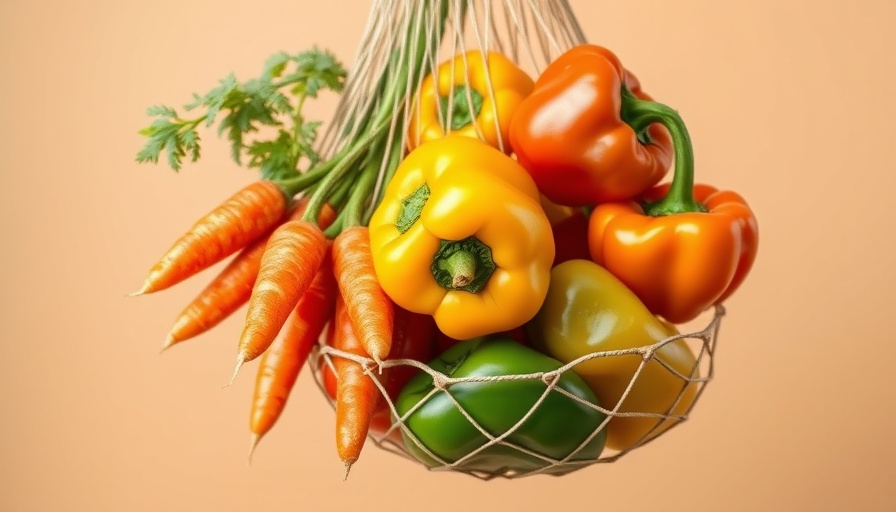
Unlocking the Power of Fiber: 17 Simple Ways to Boost Your Health
When it comes to health and wellness, fiber is a superhero that often goes unnoticed. Daily fiber intake plays a crucial role in managing weight and enhancing gut health, yet many struggle to meet the recommended goals. Fortunately, you don't need to overhaul your diet overnight. Incorporating more fiber can be as simple as tweaking your meals or incorporating healthier snacks. Below are **17 easy ways to eat more fiber every day**, ensuring you’re not only feeling full longer but also supporting your overall health in a natural way.
Rethink Your Breakfast: Quick Fiber Fixes
Start your day with a fiber boost! Swap out your regular breakfast options for whole grains like oatmeal or whole grain toast. Add fruits such as berries or bananas that are high in fiber and low in calories. Not only do they taste great, but they also keep your energy levels stable throughout the morning.
Snacking Smart: Fiber-Rich Choices
Reevaluate your snacks! Instead of reaching for chips or cookies, try snacking on nuts, popcorn, or raw vegetables with hummus. These options are not only filling but pack a powerful fiber punch. For instance, a handful of almonds or a cup of air-popped popcorn can significantly increase your fiber intake without excessive calories.
Beans Are Your Best Friend: Diverse Meal Additions
Beans are not only rich in protein but are also one of the highest sources of dietary fiber. Integrate beans into salads, soups, or rice dishes. From black beans to chickpeas, there’s a variety to choose from, allowing you to explore different flavors while boosting your fiber intake.
The Secret of Seeds: Tiny Nutritional Powerhouses
Don’t overlook seeds! Chia seeds and flaxseeds are particularly fiber-dense. Simply sprinkle them on yogurt or incorporate them into smoothies for an effortless fiber enhancement. These tiny seeds not only add crunch but also come packed with healthy omega-3 fatty acids.
Whole Grains Over Refined: A Simple Swap
Switching from refined grains to whole grains is a game-changer. Whole grain bread, brown rice, and quinoa are healthier alternatives that contribute more fiber to your daily intake.
Fruits and Vegetables: The Colorful Route to More Fiber
Make fruits and veggies the centerpiece of your meals. The more color on your plate, the higher the fiber content tends to be. Foods like avocados, raspberries, and artichokes are tasty options packed with fiber.
Meal Prep with Purpose: Fiber-Focused Strategies
When planning meals for the week, focus on incorporating fiber-rich ingredients. This could mean preparing a hearty vegetable soup loaded with lentils or a fiber-rich salad with leafy greens and beans. A little planning goes a long way in ensuring you hit your fiber goals.
Cooking Techniques: Roast, Grill, or Steam
How you cook can affect the fiber content of your food. Instead of boiling vegetables, which can decrease their fiber content, opt for roasting or grilling them. This method preserves nutrients and adds delicious flavor.
Be Mindful of Processing: Less is More
Processed foods often lack fiber. Be mindful of what you’re consuming and aim for items with minimal processing. Foods labeled ‘100% whole grain’ should be preferred over their white counterparts.
Stay Hydrated: The Fiber Connection
Increasing fiber in your diet must be accompanied by adequate hydration. Water helps to ease digestion and allows your body to make the most of the fiber you're consuming.
Identify Your Fiber Needs
Your daily fiber requirement can vary based on age, gender, and activity levels. Men generally need about 38 grams, while women require around 25 grams daily. Understanding your personalized needs can help you reach your health and wellness goals effectively.
The Role of Community in Health and Wellness
Incorporating more fiber-rich foods isn’t just about personal health; it’s also an opportunity to engage with your community. Health and wellness events often feature nutrition workshops that can provide insight and support. Learning how to choose and prepare these foods can foster community connections and promote shared health goals.
Conclusion: Making Fiber Your Friend
By incorporating these 17 easy ways to eat more fiber into your daily routine, you’ll find that improving your diet can be simple and enjoyable. Fiber is not just about digestion—it’s a fundamental part of a vibrant, healthy lifestyle. Remember, making changes doesn’t have to happen all at once. Small adjustments add up, leading you to optimal health and wellness.
Ready to get started on your journey to better health? Make fiber a priority today, and explore local health and wellness businesses, workshops, and products available in San Antonio to enhance your experience!
 Add Element
Add Element  Add Row
Add Row 



Write A Comment